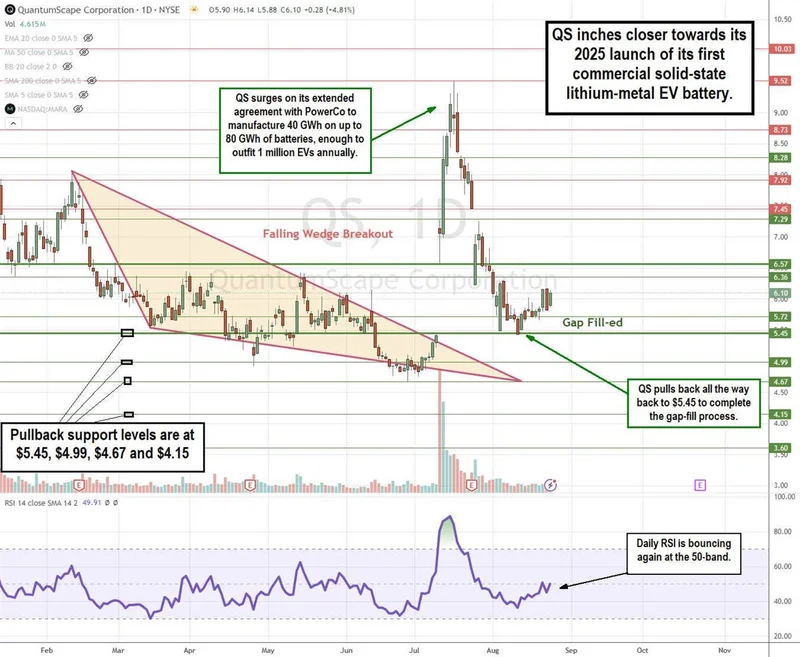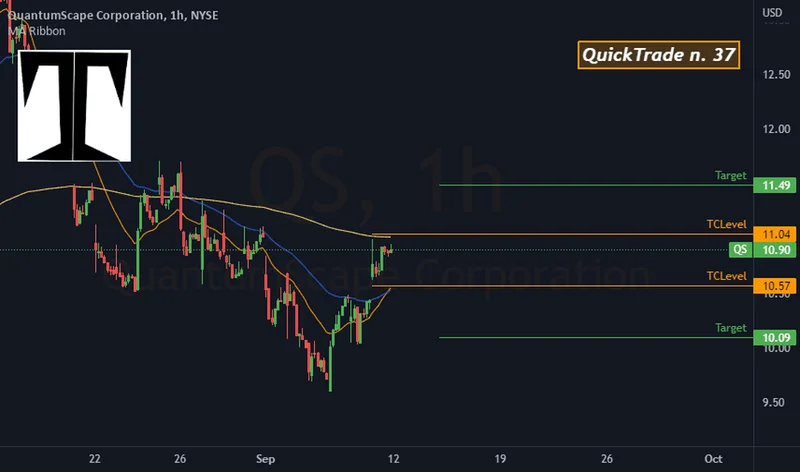Article Directory
QuantumScape's Earnings Beat: A 10% Stock Jump for a Two-Cent Victory?
The numbers, on their own, are clinical. QuantumScape, the San Jose-based battery hopeful, reported a quarterly loss of $0.18 per share. Wall Street’s consensus forecast had projected a loss of $0.20 per share. The difference, a mere two cents, is the kind of rounding error you might ignore when splitting a dinner bill. Yet, in the strange calculus of the stock market, this two-cent discrepancy was treated as a monumental victory.
The pre-market tickers blinked green, a wave of buy orders flooding the system before most of the country had its first coffee. By the end of trading, QuantumScape’s stock (`QS`) was up significantly—to be more exact, it closed over 10% higher on the day. This is the central data point that demands interrogation. A company still firmly in the pre-revenue stage, burning through cash to develop a technology that is not yet commercialized, sees its valuation swell by hundreds of millions of dollars. Why? Because it managed to lose money just a little bit slower than a group of analysts predicted it would.
This isn't a story about batteries. It's a story about expectations, sentiment, and the vast, often irrational, gap between a financial data point and its interpretation by the herd.
The Anatomy of a 'Beat'
Let's be precise about what an "earnings beat" means for a company like QuantumScape. It is not a sign of profitability. It is not an indicator of positive cash flow. It is, in this case, a signal of slightly better-than-expected cost control or a minor shift in R&D spending timelines. The company is still an enterprise built entirely on a future promise (the mass production of its solid-state lithium-metal batteries), and its quarterly reports are less about earnings and more about its burn rate.
In this context, the market is behaving like a doctor who, upon seeing a patient's fever drop from 104 to 103.8, declares a miraculous recovery is underway. The patient is still critically ill. The trajectory has changed by a statistically minor amount, but the fundamental condition remains unchanged. QuantumScape’s fundamental condition is that of a company that consumes capital to chase a breakthrough. The two-cent "beat" doesn't alter that reality; it just suggests they were marginally more efficient with the IV drip of investor cash this past quarter.

I've looked at hundreds of these filings, and this is the part of the report cycle that I find genuinely puzzling. The market’s willingness to extrapolate a major narrative victory from such a minor deviation in projected losses is a powerful indicator of just how much hope is baked into the `qs stock price`. It’s a feedback loop: the stock is priced for perfection, so any data that doesn't actively disprove the utopian future—no matter how trivial—is received with outsized euphoria. But does this euphoria reflect a sober analysis of the company's progress, or is it just a reflection of a market desperate for good news in a speculative sector? Is there something hidden in the footnotes that justifies this, or are we simply watching algorithms trade on a single headline keyword: "beats"?
Decoding the Market's Euphoria
The 10% surge is, in itself, a data set. It quantifies the market's sentiment. This isn't the slow, methodical price appreciation of a blue-chip stock like `Charles Schwab` after a solid report. This is the explosive, almost violent, price action characteristic of narrative-driven equities, a class that includes everything from certain `AI stock` names to the more speculative EV players. It’s a world where the story matters more than the balance sheet.
Think of it this way: QuantumScape’s valuation is a vessel designed to carry investor hopes across the vast, treacherous ocean of pre-commercialization. The company’s reports on its technological milestones are supposed to be the wind in its sails. The earnings report, showing a slightly smaller loss, is like finding out you have a day's extra rations on a journey that will take years. It’s comforting, perhaps, but it doesn’t fundamentally change the distance to the destination. The market, however, reacted as if a new continent had been spotted just over the horizon.
This kind of reaction is what separates a company like QuantumScape from, say, `Tesla stock` (`TSLA`) today. While TSLA is certainly volatile, its price movements are tethered, however loosely, to real-world production numbers, delivery figures, and profit margins. QuantumScape has none of these anchors. Its stock price is a function of belief. The 10% jump shows us that this belief is not only strong but also incredibly sensitive. The question for any rational investor is whether that sensitivity is an asset or a liability. When a two-cent beat can cause a double-digit surge, what would a two-cent miss cause?
A Discrepancy in the Data
My analysis brings me to a simple, unavoidable conclusion: the market's reaction is disproportionate to the news itself. A 10% increase in market capitalization is not a rational response to a 1% improvement on a loss forecast. This isn't a critique of QuantumScape’s technology or its long-term potential. It is a clinical observation of a market that appears to be rewarding the absence of a negative surprise rather than the presence of a positive catalyst. The data shows a company that is executing according to plan, perhaps a hair better. The market response, as seen in reports like QS Earnings: QuantumScape’s Stock Jumps 10% on Earnings Beat - TipRanks, shows a crowd that is betting on a miracle and will seize any shred of evidence to reinforce its belief. The discrepancy between those two realities is where risk resides.




